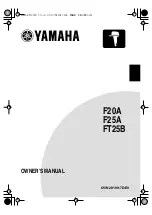KIT34825EPEVME Evaluation Board
, Rev. 2.0
20
Freescale Semiconductor
Using the Evaluation Kit
6.2
Evaluation Examples
Once the above connections are made, the evaluation kit is ready to be evaluated or demonstrated. One
can imagine that the PC and the evaluation board form a cell phone system. The only interface of the cell
phone to the external world is the mini-USB connector. External accessories, such as an audio headset,
an ac-dc adapter, or a USB port can be connected to the cell phone system only through the mini-USB
connector.
6.2.1
Dedicated Charger
A dedicated charger is a powered accessory that has a 5V on the VBUS pin and the D+ and the D- pins
are shorted. When such an accessory is attached to the mini-USB connector of the evaluation board, the
34825 will recognize and send an interrupt to the I2C host. The internal power MOSFET is turned on
automatically to switch the 5V VBUS voltage to the OUT output and the I2C host sets the ISET output to
low. Both LEDs for the OUT and the ISET indications will be turned on. The dedicated charger is
displayed in the Identification Result window in the GUI software.
If a dedicated charger is not available, one can simulate such an accessory with the on-board accessory
simulator. The steps are as following:
1. Short pin 39 and pin 40 of J2.
2. Short J9.
Once J9 is shorted, the 5V supply is jumped to the VBUS pin of the mini-USB connector. The 34825 will
see an accessory with D+ and D- shorted and a 5V on the VBUS pin, and hence recognizes it as a
dedicated charger.
J16, J17
Open
TxD and RxD signals. Not supported in the current board.
J1
Open or short
J1 contains 13 pairs of headers for the 13 remote control keys. They
are disconnected by the SW1 switch so either short or open does not
affect the operation of the evaluation. When the remote control
keys in an audio accessory is simulated, one pair should be shorted
and then the SW1 push button be pressed to create a key press
event.
J2
Open
J2 contains 20 pairs of headers for selecting different ID resistors
for their corresponding accessories. The pair of pin 39 and 40 are
connected to the DP and DM pins of the mini-USB connector on
the evaluation board.
J3
Open
J3 is for simulating the USB charger accessory.
J9
Open
J9 shorts the 5V bus voltage from the type-B connector to the
VBUS pin of the mini-USB connector for simulating. Unless using
the on-board simulator for a powered accessory, this jumper should
always be open.
Table 1. The Default Configuration of the Jumpers
Jumper Default
Connection
Comments


















